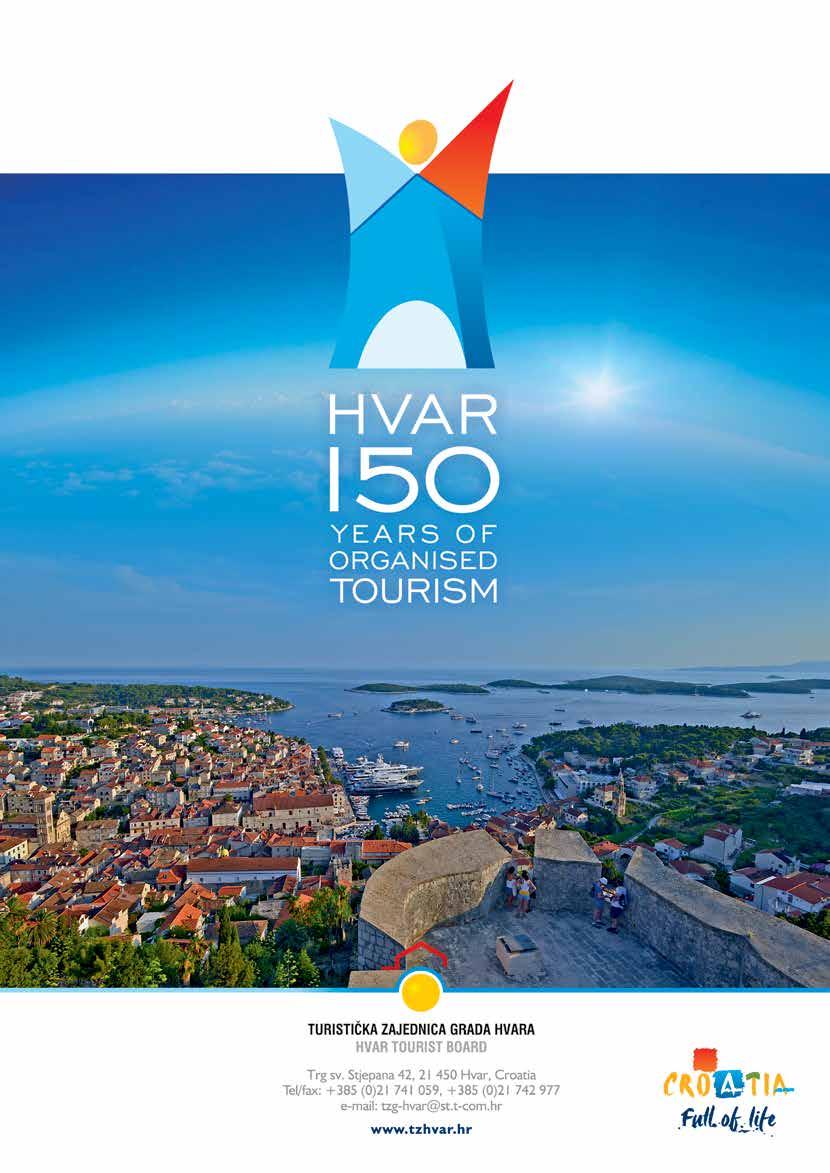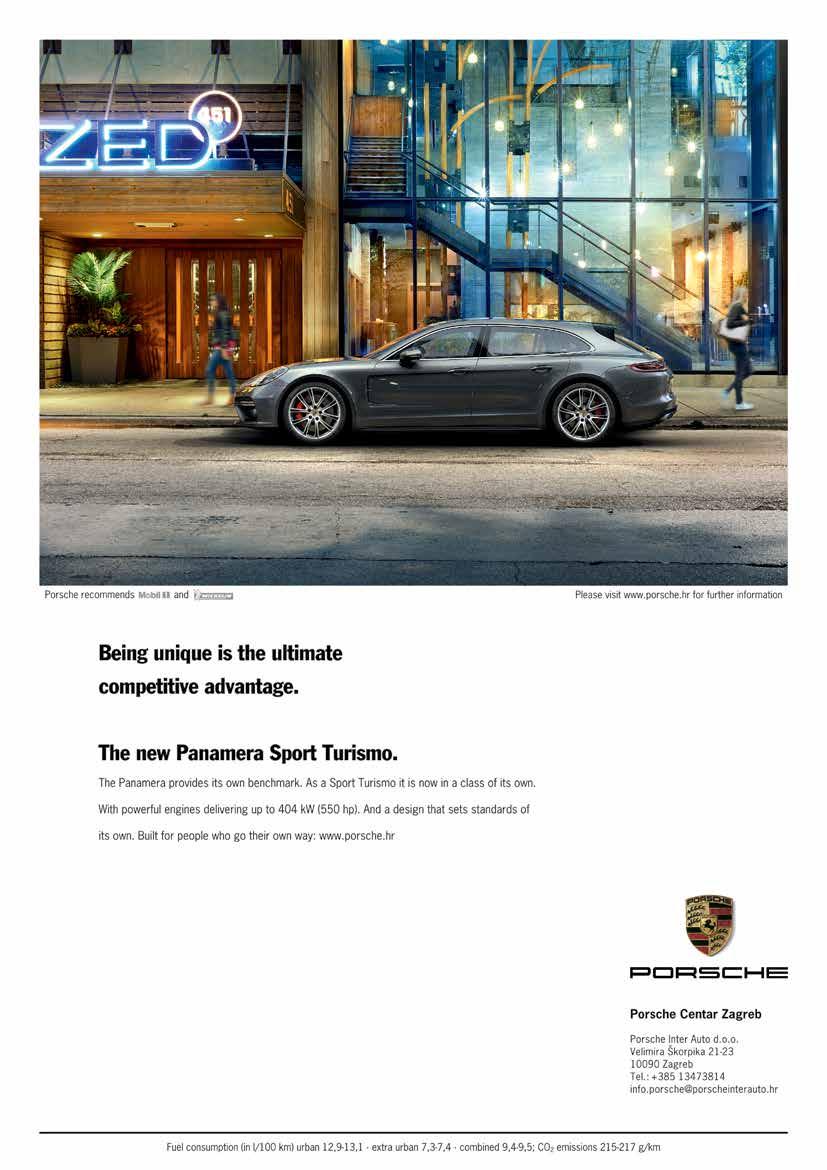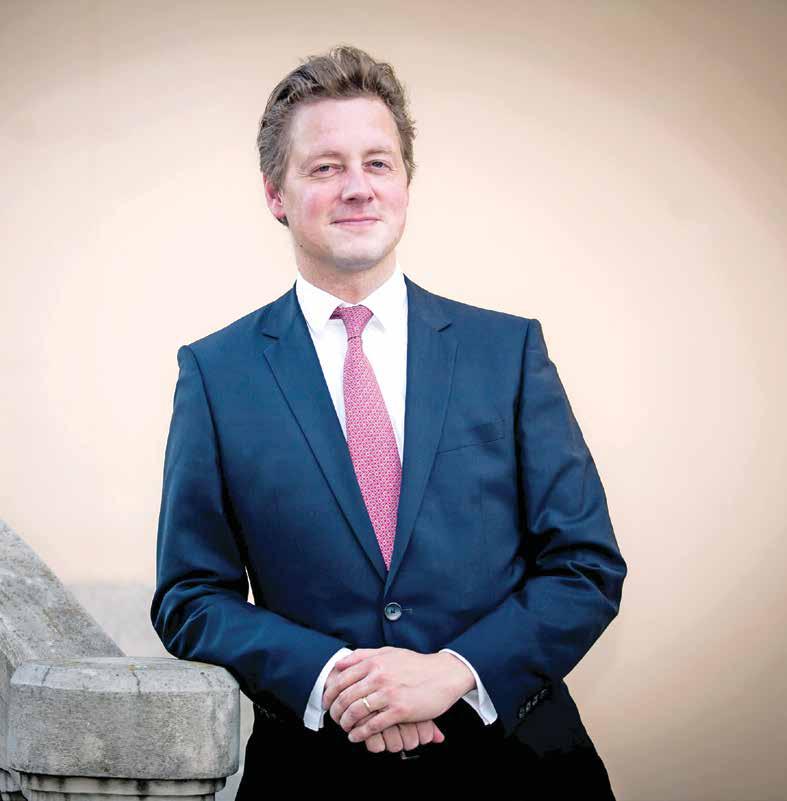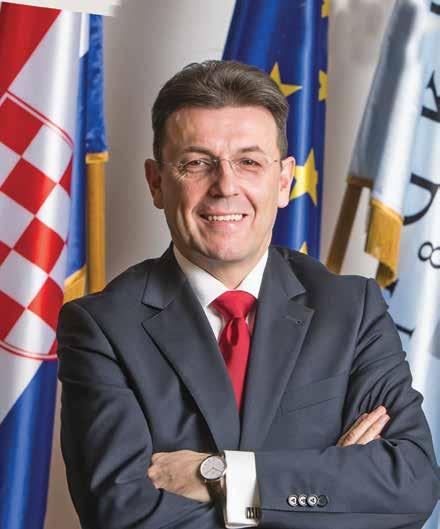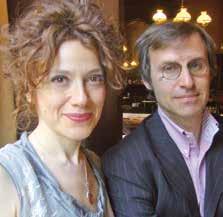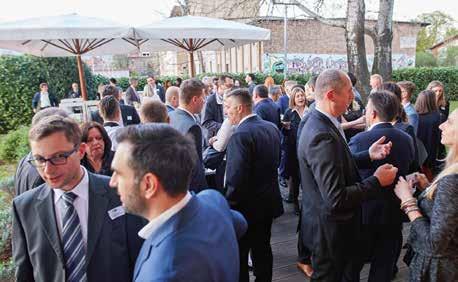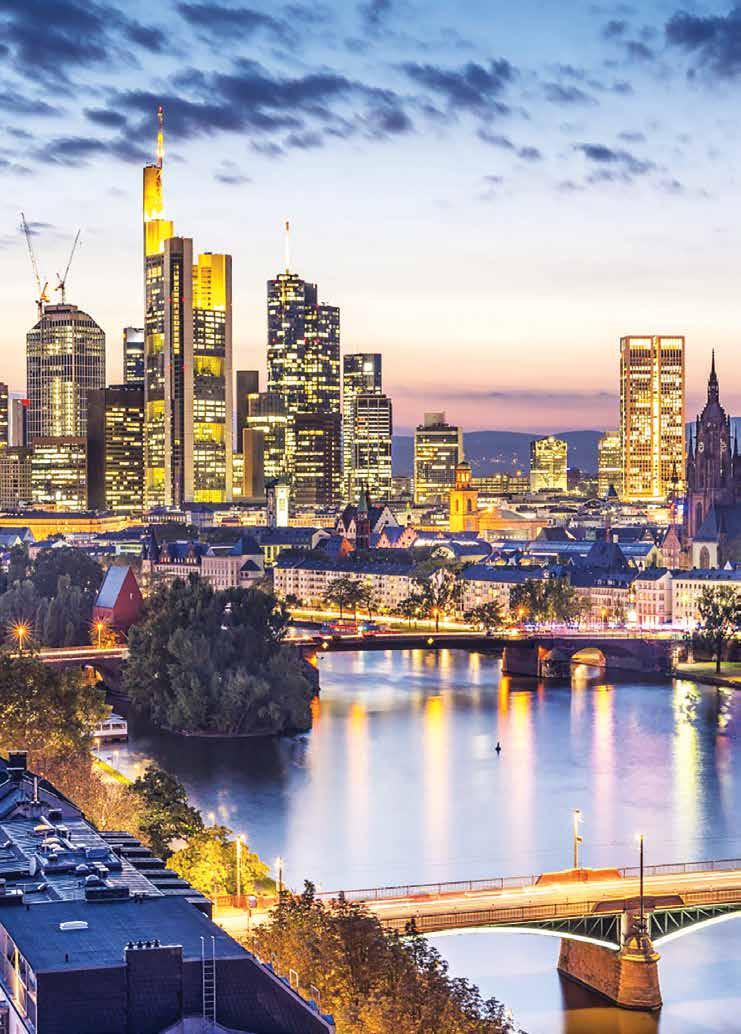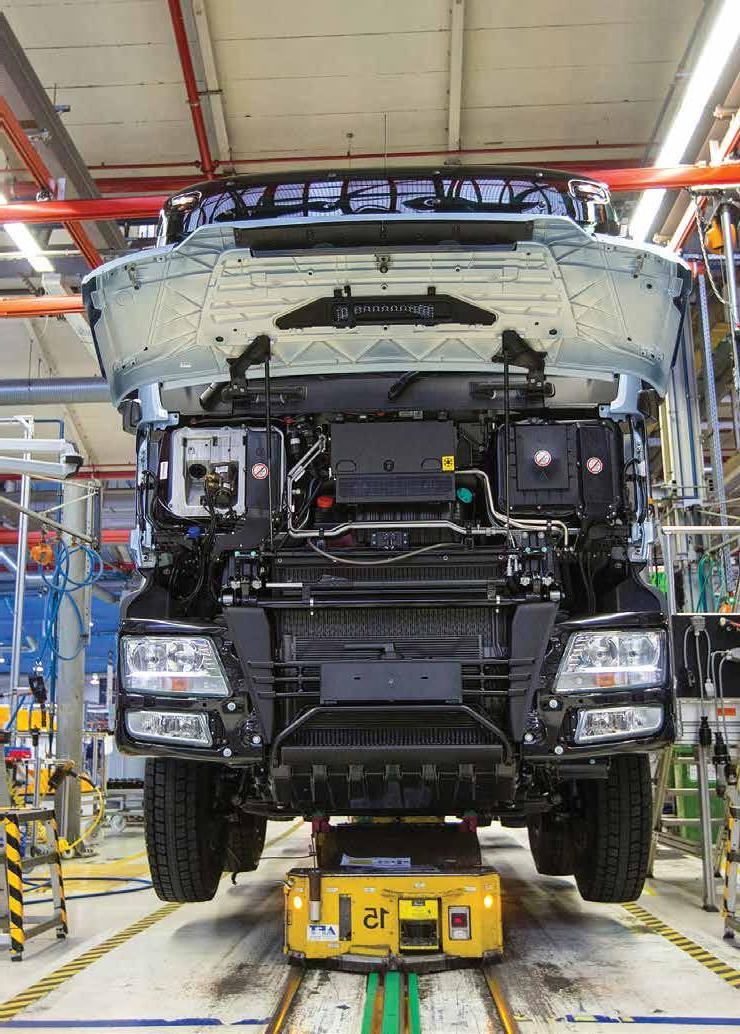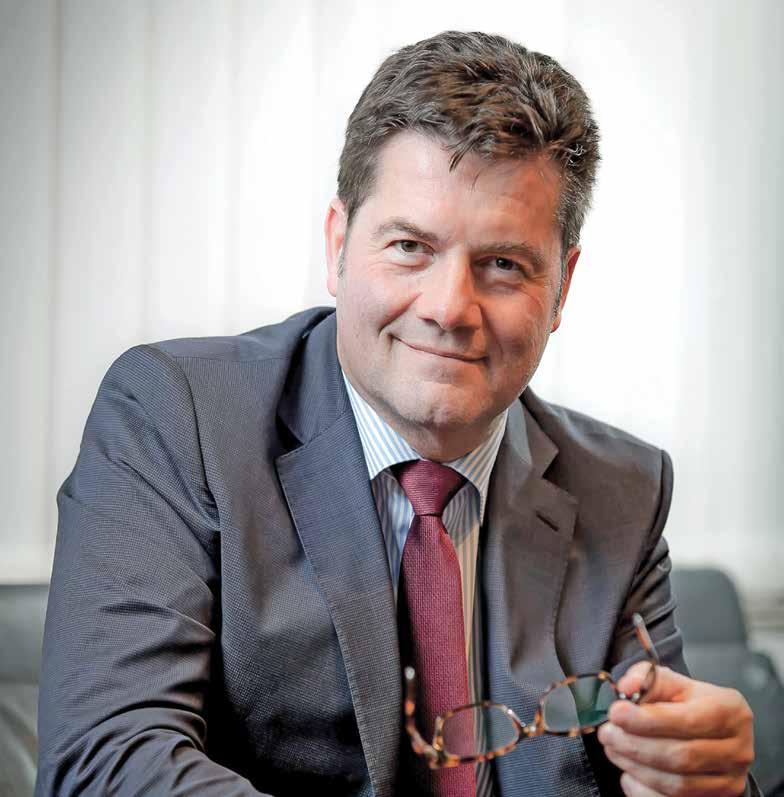
9 minute read
THE HEART OF EUROPE
TOURISM
THE HEART OF EUROPE
Advertisement
— Text — Nikica Miloš
Germany was for decades considered a good place to go for work, business or to attend a trade fair. Good infrastructure, clean environment and… well... nothing more than that
However, in time Germany has regained its fame as a major tourist destination, lost its links to the infamous World War II period, and become a hub for culture, design, art, music and, of course, all other “old” attractions, like castles, spas, wineries, ancient cities... just like in the times of Dostoyevsky and Turgenev, who described German cities and spas as beautiful lively tourist attractions.
FACTS AND FIGURES –
GIVEN THAT WE ARE IN
GERMANY
As for facts and figures, they are such a German characteristic that we mustn’t avoid mentioning the pure figures. And they tell us that Germany is the world’s seventh most visited country, with a total of 407.26 million overnight stays during 2012. That number includes 68.83 million overnight stays by foreign visitors. In 2009 the majority of foreign tourists came from the Netherlands, the United States and Switzerland. Additionally, more than 30% of Germans spend their holiday in their home country. According to Travel and Tourism Competitiveness Reports, Germany is rated one of the safest travel destinations worldwide, despite the unfortunate and tragic Berlin attack. Surveys
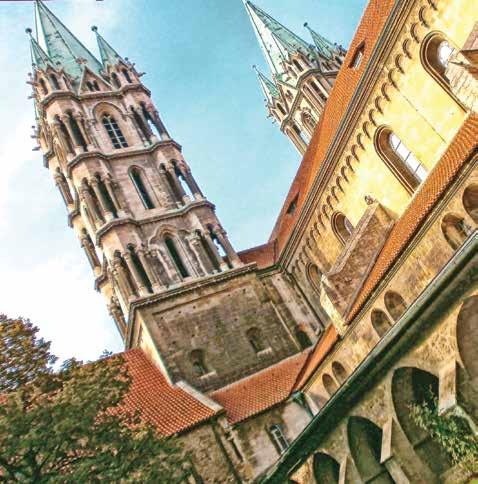
by the GNTB include perceptions and reasons for holidaying in Germany, which are as follows: culture (75%), outdoors/ countryside (59%), cities (59%), cleanliness (47%), security (41%), modernity (36%), good hotels (35%), good gastronomy/cuisine (34%), good accessibility (30%), cosmopolitanism / hospitality (27%), good shopping opportunities (21%), exciting nightlife (17%) and good price / performance ratio (10%) (multiple
answers were possible). In terms of the numbers of overnight stays, travel to Germany’s twelve biggest cities more than doubled between 1995 and 2005, marking the largest increase of any travel destination. This increase mainly arose as a result of the growth of cultural tourism, often in conjunction with educational or business travel. Berlin alone receives some 25 million tourists per year, with Munich following with half that many. Hamburg, the Hanseatic town and home of the early Beatles, is the third most popular city, with slightly over 10 million visitors. It is interesting that many smaller places attract over a million visitors annually, like the charming Lubeck, with its Gothic centre in the Old Town, and the North Sea resort of Cuxhaven, where a cold breeze merges with the warm waters of the Gulf Stream and long sandy beaches are alluring. Interestingly enough, the three most visited attractions are in major cities and are inextricably connected with politics. With an average of over six million visitors entering Cologne Cathedral per year, the cathedral is Germany's most visited landmark. Second and third places go to the Reichstag building in Berlin and the Hofbräuhaus in Munich.
LUTHERLAND
This year is extremely important for both Germany and Protestants, given that it marks half a millennium since one of the first Protestant thinkers and leaders did what he did in 1517. Of course, we all know who and what that was: Martin Luther, a rebellious priest who was disgusted with the way the Catholic Church enjoyed splendour and sold valuables to finance the completion of St Peter’s Church in
Rome, decided to say something in opposition. His “rage against the machine” led to the nailing of a copy of his famous 95 Theses to the door of the church in Wittenberg. The years leading up to this date have been declared the Luther Decade, which includes many special events and observances. And although the majority of tourists who will visit East Germany and picturesque cities like Wittemberg will be Protestants from all over the world, you don’t have to be a Lutheran to appreciate the fiery passion and courageous idealism of Martin Luther, the Father of the Reformation. This German theologian and former monk led an effort to reform the Church of his day, but in the end began a new branch of Christianity. A journey through the sites connected to this famous reformer includes some of Germany’s most charming medieval cities and towns, like Wittenberg, Eisenach, Erfurt and Luther’s birthplace, Eisleben. Two of these towns proudly bear the name Lutherstadt: Lutherstadt Eisleben and Lutherstadt. Leningrad and Titograd might have been consigned to history, but “Luthergrad” is here to stay… twice.
THE NORTHERNMOST
WINE REGION IN THE
WORLD
Apart from Martin Luther and his legacy that spread throughout the world, in October last year the German Tourist Board decided to promote, the story of the world’s Northernmost wine region, which
YOU CANNOT MISS NAUMBURG AND ITS CATHEDRAL, WITH SPLENDID GOTHIC ART, WITH QUEEN UTA BEING ARGUABLY THE MOST BEAUTIFUL WOMEN PORTRAYED IN THE ART HISTORY
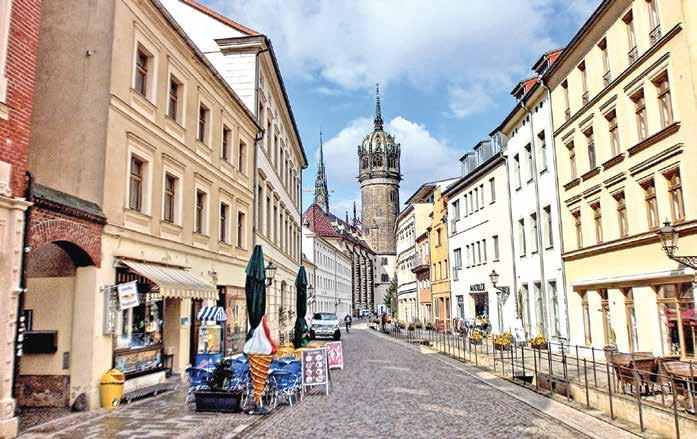
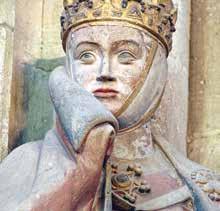
is located north in East Germany and is known as Saale-Unstrut. The entire region is named after two rivers, the Saale and the Unstrut, while the most important towns there are Halle, Freyburg and Naumburg. The Saale-Unstrut wine route leads through the winegrowing region of Saale-Unstrut. The “Weinstraße” was inaugurated in 1993 as the 13th German Wine Route. It is the northernmost wine road in Germany and Europe. It is not warm enough to produce red wine, but there are white wines, like Müller-Thurgau, Weißburgunder and Grauburgunder, Bacchus, Riesling, Silvaner, Gutedel and Kerner. About 24% of the wines produced there are rosé wines, like Dornfelder, Portugieser, Spätburgunder and Blaue Zweigelt. The idyllic landscapes full of vineyards are dotted with beautiful castles and towns, and Querfurt is one of the most interesting among them – as a site where many films depicting the Middle Ages were shot. On the other hand, you cannot miss Naumburg and its cathedral, with its splendid Gothic art and Queen Uta – arguably the most beautiful women portrayed in the history of art. It is strange how the Gothic art period was the last period when the ideal of beauty was exactly the same as today: thin women, with full lips and big eyes. You can imagine Uta walking down the catwalk or streets of any modern city today, which cannot be said for later Renaissance fatties, not to mention baroque beauties, with their small mouths, small eyes and … big bodies. The cities and towns in this part of Germany, and in Germany generally, all remind us of Hesse’s “Narcissus and Goldmund”, while we are enchanted by the spirit of bygone times fused carefully with modernity and high-tech. Greenery and technology married, that could be the best explanation of Germany, as it perfectly applies here.
BADEN BADEN
There are many baths in Europe, and there are certainly a lot in Germany, but only one of them is called “Bathing-Bathing”. Of course, it is the rhythmically named Baden-Baden. Thanks to its mild climate and hot springs, Baden-Baden is one of the world's best-known spa towns. Baden-Baden - once known as Aquae Aureliae - has been a popular spa destination for more than 2,000 years, and much evidence of the Roman presence can still be seen at the well-preserved Roman Bath Ruins. The best example is the Soldiers’ Bath under the present day Friedrichsbad spa, with its ancient floor and wall heating systems. Another highlight is the two-metre-high Roman wall. Well, if Romans knew it, there’s no reason why we should not know it … and sample it.
No trip to beautiful Baden-Baden would be complete without taking in its wonderful spas, a tradition that has existed since Roman times. It's also a popular destination for sports enthusiasts, with many golf and tennis clubs, as well as equestrian sports like horse racing. In summer it’s a haven for
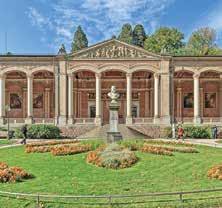
hiking, while in winter it attracts both Nordic and downhill skiers. The Schwarzwald-Hochstrasse tourist route encompasses the extensive forests located within the municipal boundaries, making Baden-Baden a perfect base from which to explore the beautiful Black Forest.
If you are in Baden-Baden, and whatever your reason for visiting Baden-Baden - whether for its sporting facilities, lovely scenery or splendid spas - a good place to begin your adventure is in the trendy Kur
THERE ARE MANY BATHS IN EUROPE AND SURELY THERE ARE QUITE MANY IN GERMANY, BUT JUST ONE OF THEM IS CALLED “BATHINGBATHING”. OF COURSE, IT IS RHYTHMICALLY SOUNDING BADEN-BADEN
garten or Spa Garden. The hub of the town's cultural life, Kurgarten is surrounded by many of Baden-Baden’s best attractions and is where you’ll find numerous boutiques, galleries, cafés and restaurants. It's also the venue for many events and festivals, including concerts in the Bandshell, as well as pop festivals and a Christmas Market. This is also the site of the spectacular Kurhaus, Baden-Baden's oldest and best-known resort establishment, built between 1821 and 1824 in the style of a French chateau. The pleasant gardens in
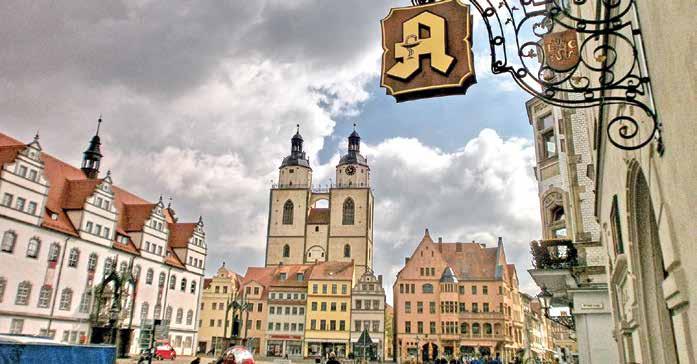
Kurpark are also worth a visit and include interesting buildings, such as the Trinkhalle or Pump Room and the Greek-Romanian Chapel, built 1863-66, with its interesting tombs. The lovely Lichtentaler Allee, a park and arboretum in the heart of BadenBaden, is one of the prettiest places in this very pretty city. The densely packed BadenBaden old town also has many worthwhile sites. Wandering the town’s quaint alleys and lanes is a perfect way to explore its Baroque-influenced architecture.
EPILOGUE
From the late 18th century onwards, cities like Dresden, Munich, Weimar and Berlin were major stops on any grand European tour. Nowadays Germany is the fastest growing tourist destination in the world, in terms of overnight stays and total visitors annually. It is no wonder in today’s world – filled with uncertainty, terrorism, illiberal tendencies, lost destinations caused by danger and destruction – tha t Germany, as a country “on the road” in the middle of Europe, situated along the way wherever you are going, attracts visitors with its security, beauty, infrastructure, gently preserved nature and carefully and impeccably preserved and restored Mediaeval towns. Germany is on the tourist map once again, and it is there to stay. Or rather, it is there to climb ever higher in the rankings. Germany first became a leader of the economy, then the leader of the European Union, and then the leader of the so-called Free World. It is time for it to become the leader in tourism and travel, as it was before the atrocious 20th century. The 21st century is one for Germany, in every way.
Subscribe NOW!
News, analysis, interview and commentary on events occuring in Croatia, in diplomatic and business community. Every month, in English, directly to your desk.
Reliable and efficient information platform offering diverse useful information about local, regional and foreign investment opportunities, trends, legislation updates and researches.
In print and online. SUBSCRIBE NOW FOR COMPREHENSIVE COVERAGE OF DIPLOMACY, POLITICS, BUSINESS AND SOCIETY IN CROATIA

Payment instructions: www.diplomacyandcommerce.hr/ subscription
Call us 091 2886677 or send us request on: Sven Darrer sven@diplomacyandcommerce.hr
only 399KN per year!
